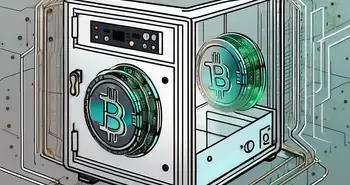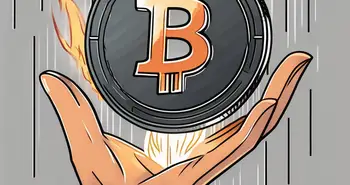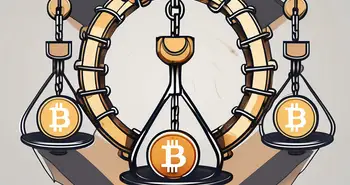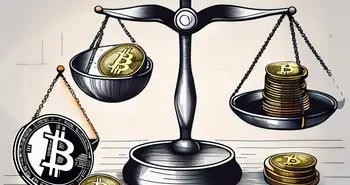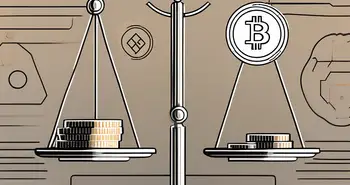Proof of Reserves: Enhancing Transparency and Trust in the Crypto Industry
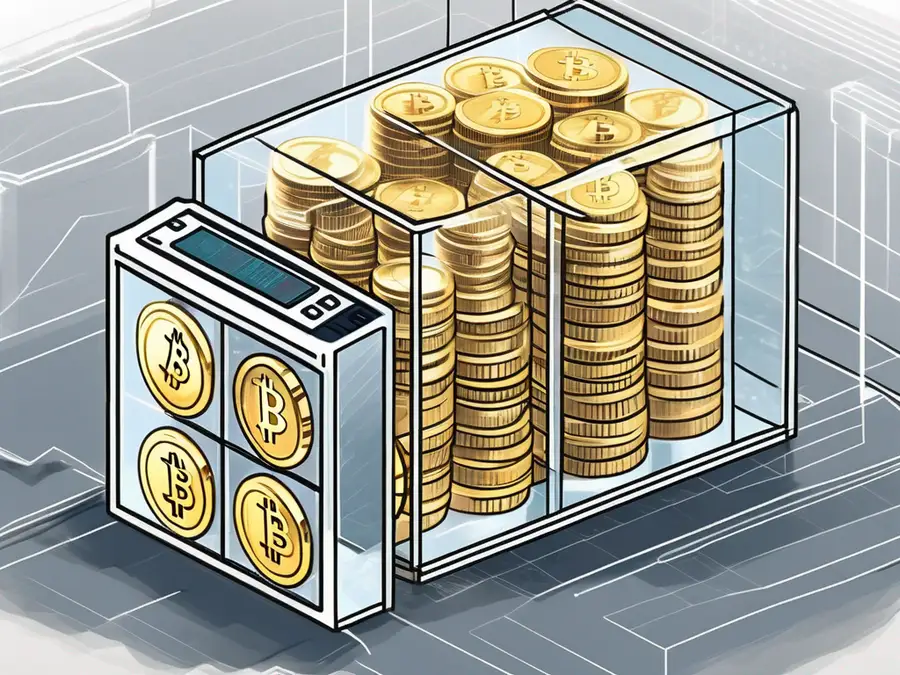
As cryptocurrencies gain prominence, ensuring their credibility and security becomes a major focus for investors and regulators alike. One way to enhance this trust is through a mechanism known as Proof of Reserves. In this comprehensive guide, we will explore what Proof of Reserves entails, its process, various types, benefits, challenges, and criticisms. By the end, you will have a thorough understanding of why this concept matters in the current digital financial landscape.
The Concept of Proof of Reserves
Definition and Importance
Proof of Reserves is a formal verification mechanism that allows third parties to confirm that a cryptocurrency exchange or custodian holds sufficient reserves to cover the assets of its clients. Essentially, it provides a way to validate claims made by these institutions regarding their asset holdings.
Why is this important? In a world where trust is paramount, especially in the realm of finance, Proof of Reserves serves as a safeguard against fraudulent practices. For instance, if an exchange claims to have 100 Bitcoin in reserves but only has 50, this discrepancy could lead to significant losses for customers. Proof of Reserves minimizes such risks by making discrepancies detectable.
The Role in Cryptocurrency
With increasing popularity, cryptocurrency exchanges are often scrutinized for their financial health and integrity. Proof of Reserves enhances accountability by allowing users to verify that their funds are indeed secure. This process is particularly vital during times of volatility when customers are anxious about asset protection.
Moreover, Proof of Reserves can be instrumental during regulatory audits, providing a transparent way to demonstrate compliance with financial regulations. A clear and reliable Proof of Reserves can significantly boost customer confidence, leading to higher retention rates and increased user engagement.
In addition to its role in enhancing trust, Proof of Reserves can also serve as a competitive differentiator in the crowded cryptocurrency market. Exchanges that adopt this practice may find themselves attracting more users who prioritize security and transparency. By openly sharing their reserve data, these platforms can foster a community of informed investors who feel empowered to make decisions based on verified information rather than speculation.
Furthermore, the implementation of Proof of Reserves can encourage better practices within the industry as a whole. As more exchanges adopt this verification method, it sets a standard that others may feel compelled to follow. This ripple effect can lead to a more robust ecosystem where accountability is the norm, ultimately benefiting all stakeholders involved—from individual investors to institutional players looking to engage with a trustworthy market.
The Process of Proof of Reserves
Step-by-step Explanation
The process of implementing Proof of Reserves can be broken down into several steps:
- Data Collection: The exchange collects data on all customer holdings, including balances and transaction histories.
- Verification: A trusted third-party auditor examines the collected data to ensure that it accurately reflects the current state of reserves.
- Reporting: Once verified, the auditor publishes a report that confirms the exchange's asset holdings align with its claims.
- Continuous Monitoring: Ongoing audits and reports help maintain transparency, ensuring that users feel secure about their investments.
For example, a leading cryptocurrency exchange may employ a well-known auditing firm to review monthly reports, providing continuous assurance to its user base. This proactive approach not only builds trust but also fosters a culture of transparency within the cryptocurrency ecosystem. By regularly updating users on the status of reserves, exchanges can mitigate concerns related to solvency and financial health, which are paramount in the volatile world of digital assets.
Key Players Involved
Several key players are integral to the Proof of Reserves process:
- Cryptocurrency Exchanges: The primary entities that need to demonstrate their reserve holdings.
- Third-party Auditors: Independent firms tasked with verifying claims and producing reports.
- Regulatory Bodies: Organizations that may enforce compliance and monitoring of exchanges.
- Users and Investors: The end customers who benefit from the transparency provided by Proof of Reserves.
Each player has a crucial role that contributes to the overall efficacy of the Proof of Reserves mechanism, ensuring accountability at every level. The relationship between these players is symbiotic; for instance, while exchanges rely on auditors to validate their claims, auditors depend on the integrity of the data provided by exchanges to produce accurate reports. Furthermore, regulatory bodies may also step in to set standards and guidelines for how these processes should be conducted, thereby enhancing the credibility of the entire system. Users and investors, on the other hand, play a pivotal role in holding these entities accountable, as their trust and participation are what ultimately drive the success of the Proof of Reserves initiative.
Types of Proof of Reserves
On-chain Reserves
On-chain reserves refer to assets that are recorded directly on a blockchain. This method allows for real-time verification and transparency. For instance, Bitcoin is stored in transactions on the Bitcoin blockchain, and anyone can confirm the amount held by a particular address. This certainty enhances trust as it operates on an immutable ledger.
Exchanges can showcase their on-chain reserves easily by publishing their wallet addresses publicly. This way, users and auditors can independently verify that the exchange holds enough cryptocurrency to cover user balances.
Off-chain Reserves
On the other hand, off-chain reserves refer to assets that are not directly recorded on a blockchain. For example, fiat currencies or other assets held in traditional financial institutions fall into this category. Verifying off-chain reserves often requires more trust in the institution holding the assets, as there’s typically no public ledger to validate claims.
While convincing audits can assure users of off-chain reserves, they might be less appealing than on-chain solutions due to the additional layer of trust required. This is where the reputation of the institution comes into play, as well as their willingness to undergo rigorous auditing practices.
Benefits of Proof of Reserves
Enhancing Transparency
Perhaps the most significant benefit of Proof of Reserves is the enhancement of transparency within the cryptocurrency market. By allowing independent verification of asset holdings, exchanges are less likely to manipulate data, and users can gain insight into the actual state of reserves.
This transparency helps mitigate fears surrounding issues like insolvency or mismanagement. Investors are often more likely to engage with platforms that openly share their financial status, leading to a healthier marketplace.
Building Trust in Digital Assets
Trust is a cornerstone of any financial system, and Proof of Reserves can significantly bolster this fundamental aspect in the crypto world. As users gain more confidence in the platforms they utilize, they become more comfortable holding and trading digital assets.
For example, after an exchange successfully implements Proof of Reserves, they may see a marked increase in the number of active users and higher trading volumes as customers feel more secure in their transactions.
Challenges and Criticisms of Proof of Reserves
Potential Risks and Limitations
While Proof of Reserves offers numerous benefits, it does have its risks. One major limitation is that not every asset can be easily verified. Some cryptocurrencies do not have clear transaction histories or may be locked in smart contracts, complicating the proof process.
Moreover, the effectiveness of Proof of Reserves relies heavily on the reputation of the auditing firms involved. If the auditing process lacks credibility or consistency, users might find little assurance in the results, undermining the entire system.
Controversies and Debates
Debates often surface regarding the true efficacy of Proof of Reserves, particularly concerning off-chain assets. Critics argue that these processes can be manipulated or misrepresented, leading to a false sense of security for investors.
Furthermore, discussions around privacy and data protection arise when detailing reserves—an exchange may struggle to balance transparency while still safeguarding sensitive user information.
FAQ
What is Proof of Reserves?
Proof of Reserves is a verification mechanism that allows third parties to confirm an exchange's asset holdings to ensure it can cover all customer funds.
Why is Proof of Reserves important?
This mechanism enhances transparency and builds trust within the cryptocurrency market, protecting users against potential fraud or insolvency.
Are there different types of Proof of Reserves?
Yes, there are on-chain reserves, which are publicly verifiable, and off-chain reserves, which require trust in the institutions holding those assets.
What are the main benefits of Proof of Reserves?
It enhances transparency and builds trust, making users feel more secure about their funds and encouraging engagement with exchanges.
What challenges does Proof of Reserves face?
The challenges include limitations in verifying certain assets and the credibility of auditing firms, which can affect users’ trust in the process.
In conclusion, understanding Proof of Reserves is crucial in navigating the cryptocurrency landscape. This mechanism not only assures users about the safety of their assets but also strengthens the overall integrity of digital finance. With effective implementation, exchanges can encourage a more trustworthy environment, paving the way for the future of cryptocurrency investments.
As you've learned about the importance of Proof of Reserves in ensuring the safety and integrity of your cryptocurrency investments, it's clear that choosing the right platform is crucial. Morpher not only embraces the transparency and trust that Proof of Reserves provides but also revolutionizes the trading experience with its blockchain-based platform. With zero fees, infinite liquidity, fractional investing, and the safety of a non-custodial wallet, Morpher stands out as a leader in democratizing trading for investors around the world. Ready to experience a new era of trading across multiple asset classes with the added benefits of 10x leverage and unique Virtual Futures? Sign Up and Get Your Free Sign Up Bonus at Morpher.com today and join the trading revolution.

Disclaimer: All investments involve risk, and the past performance of a security, industry, sector, market, financial product, trading strategy, or individual’s trading does not guarantee future results or returns. Investors are fully responsible for any investment decisions they make. Such decisions should be based solely on an evaluation of their financial circumstances, investment objectives, risk tolerance, and liquidity needs. This post does not constitute investment advice.

Painless trading for everyone
Hundreds of markets all in one place - Apple, Bitcoin, Gold, Watches, NFTs, Sneakers and so much more.

Painless trading for everyone
Hundreds of markets all in one place - Apple, Bitcoin, Gold, Watches, NFTs, Sneakers and so much more.

